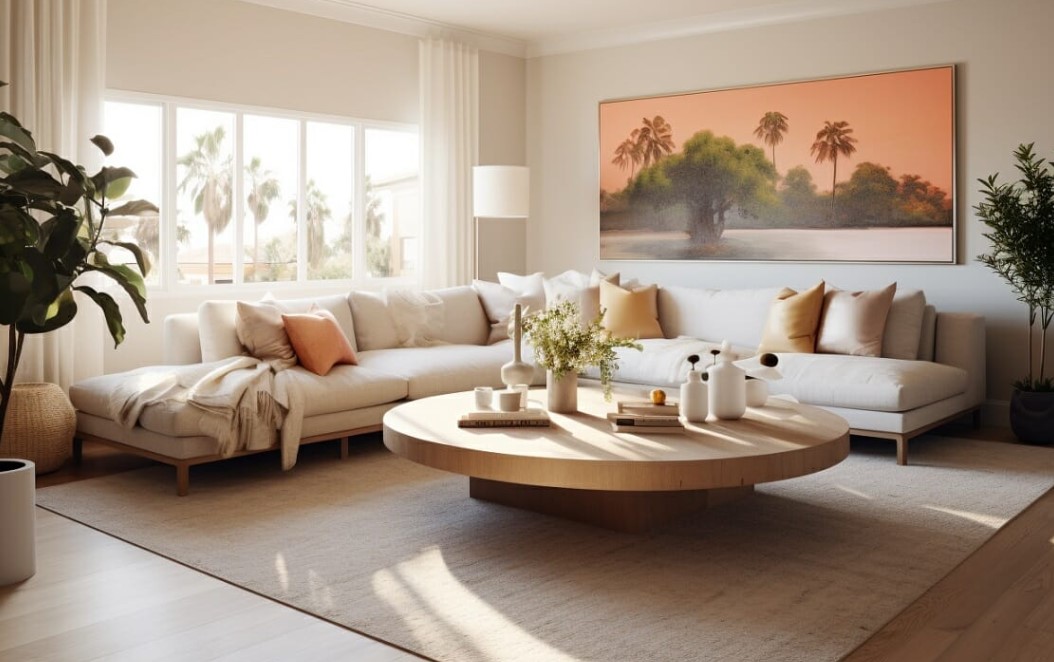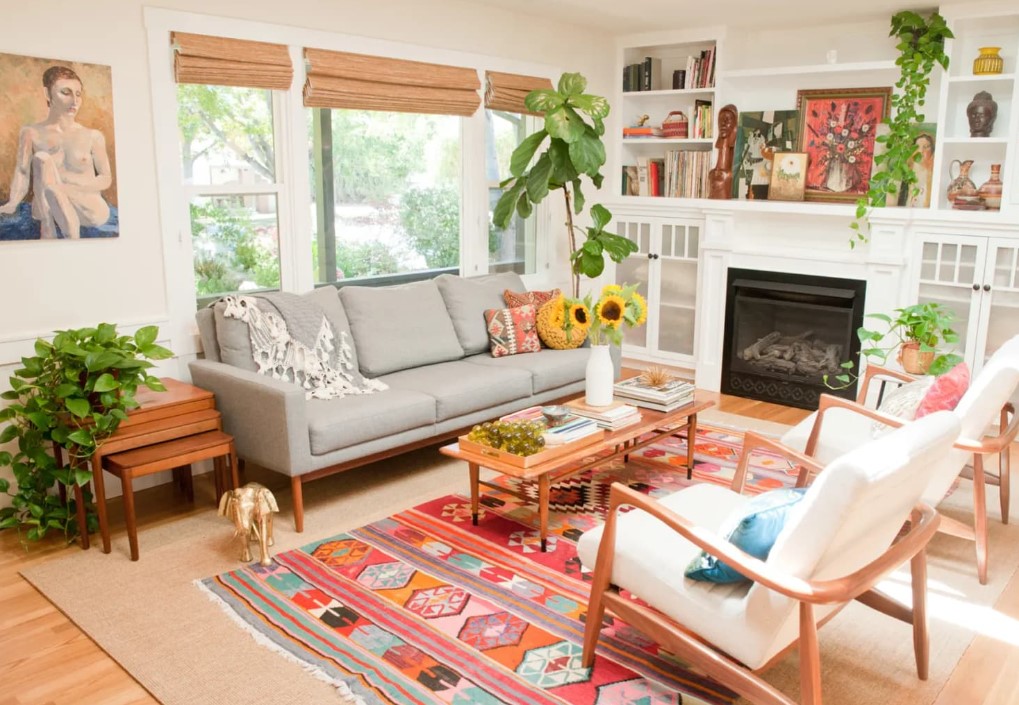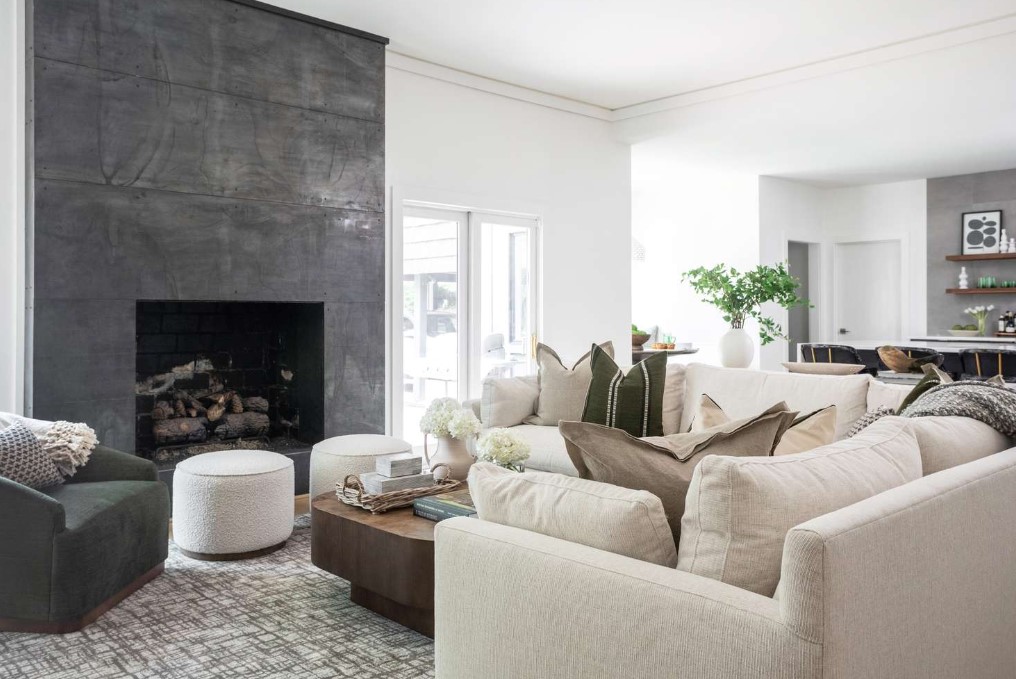The living room is often the heart of the home, where family and friends gather to relax, entertain, and spend quality time together. A well-designed living room not only looks great but also functions efficiently to meet the needs of your household. This guide provides a wealth of ideas and tips to help you create a stylish and comfortable living space that reflects your personality and lifestyle.
Living Room Layout

In today’s fast-paced world, the living room remains the heart of the home—a sanctuary where families gather, entertain, and unwind. To create a living space that is both functional and aesthetically pleasing, one must consider various design elements and personal preferences. This article delves into some innovative and trendsetting living room ideas that can transform any space into a stylish haven.
Maximizing Space with Minimalist Design
Minimalism is a timeless trend that focuses on simplicity and functionality. By incorporating minimalist principles, you can create a living room that feels spacious and uncluttered.
- Clean Lines and Neutral Colors: Opt for furniture with clean lines and neutral colors. This approach not only makes the room appear larger but also provides a versatile backdrop for various decorative accents. White, beige, and gray are excellent choices for walls and large furniture pieces, while pops of color can be added through throw pillows, rugs, and artwork.
- Multipurpose Furniture: Invest in multipurpose furniture to maximize space. A sofa bed, for instance, can serve as seating during the day and a guest bed at night. Coffee tables with storage compartments and ottomans that double as seating or storage units are also practical choices.
Embracing Nature with Biophilic Design
Biophilic design emphasizes the connection between humans and nature, creating a calming and rejuvenating living space.
- Indoor Plants: Incorporate indoor plants to bring a touch of nature indoors. Plants like the fiddle leaf fig, snake plant, and succulents not only purify the air but also add visual interest. Place them in strategic locations such as corners, windowsills, and tabletops.
- Natural Materials: Use natural materials like wood, stone, and rattan to create a warm and inviting atmosphere. Wooden furniture, stone accent walls, and rattan baskets can all contribute to a biophilic design.
Incorporating Smart Technology
The integration of smart technology in living room design can enhance convenience and efficiency.
- Smart Lighting: Install smart lighting systems that allow you to control the brightness and color of your lights through a smartphone app or voice command. This feature can create different moods and atmospheres with ease.
- Home Automation: Consider home automation systems that control various aspects of your living room, such as temperature, lighting, and entertainment systems. Smart thermostats, automated window shades, and voice-activated assistants can all contribute to a seamless and modern living space.
Creating a Cozy Atmosphere
A cozy living room is essential for relaxation and comfort.
- Soft Textiles: Incorporate soft textiles such as plush rugs, cozy blankets, and decorative throw pillows. These elements add warmth and texture to the room, making it feel inviting and comfortable.
- Ambient Lighting: Use ambient lighting to create a warm and cozy atmosphere. Table lamps, floor lamps, and string lights can all provide soft, diffused lighting that enhances the overall ambiance of the room.
Personalizing with Art and Decor
Personal touches make a living room feel unique and reflective of your style.
- Statement Art Pieces: Invest in statement art pieces that resonate with your personality and taste. Large paintings, sculptures, and wall art can serve as focal points and conversation starters.
- Unique Decor Items: Incorporate unique decor items such as vintage finds, travel souvenirs, and family heirlooms. These items add character and tell a story, making your living room truly one-of-a-kind.
Optimizing Layout and Flow

A well-planned layout ensures that your living room is functional and visually appealing.
- Furniture Arrangement: Arrange furniture in a way that promotes conversation and flow. For instance, position sofas and chairs to face each other and ensure there is ample space for movement. Avoid overcrowding the room with too many pieces.
- Zoning: Create distinct zones within your living room for different activities. For example, designate areas for reading, watching TV, and socializing. Use rugs, furniture placement, and lighting to define these zones clearly.
Adding a Touch of Luxury
Luxury can be achieved through thoughtful design and high-quality materials.
- Luxurious Fabrics: Incorporate luxurious fabrics such as velvet, silk, and leather. These materials add a touch of elegance and sophistication to your living room.
- High-End Finishes: Opt for high-end finishes like marble countertops, brass fixtures, and handcrafted furniture. These elements contribute to a polished and upscale look.
Staying Current with Trends
Keeping up with the latest trends ensures that your living room design remains fresh and contemporary.
- Bold Colors and Patterns: Incorporate bold colors and patterns to add excitement and personality to your living room. Consider accent walls, vibrant throw pillows, and patterned rugs to make a statement.
- Eclectic Mixes: Mix and match different styles and eras to create an eclectic look. Combine vintage and modern pieces, experiment with different textures, and don’t be afraid to break traditional design rules.
Creating the perfect living room involves a blend of style, functionality, and personal touches. By embracing these innovative ideas, you can transform your living space into a haven that reflects your personality and meets your needs. Whether you prefer minimalist design, biophilic elements, smart technology, or luxurious touches, there’s a living room idea here to inspire you.
Budget-Friendly Living Room Ideas

Designing a stylish and inviting living room doesn’t have to break the bank. With thoughtful planning and creativity, you can achieve a beautiful space that reflects your personal style without overspending. This article explores various budget-friendly living room ideas that prioritize affordability without compromising on aesthetics.
Choosing Affordable Furniture and Decor
Investing in affordable yet stylish furniture and decor pieces is key to achieving a budget-friendly living room makeover.
- Secondhand and Upcycled Furniture: Consider secondhand furniture options such as thrift stores, online marketplaces, and garage sales. You can find quality pieces at a fraction of the cost of new furniture. Upcycling and refinishing old furniture can also give them a fresh, modern look while staying within budget.
- DIY Decor Projects: Embrace DIY decor projects to add a personal touch to your living room. Create custom artwork, refurbish old frames, or sew your own throw pillows and curtains. DIY projects not only save money but also allow you to customize your space according to your taste.
Optimizing Space with Smart Storage Solutions
Maximizing space is crucial in a budget-friendly living room. Smart storage solutions help keep the room organized and clutter-free.
- Multifunctional Furniture: Choose multifunctional furniture pieces that serve dual purposes, such as storage ottomans, coffee tables with built-in shelves, or sofa beds. These items maximize space while providing essential functionalities.
- Vertical Storage Solutions: Utilize vertical storage solutions such as wall-mounted shelves, floating shelves, and tall bookcases. These options not only optimize floor space but also add visual interest and display opportunities for decor items.
Enhancing Ambiance with Lighting and Accessories
Lighting and accessories play a crucial role in creating a cozy and welcoming atmosphere in your living room.
- Affordable Lighting Options: Opt for affordable lighting options such as floor lamps, table lamps, and string lights. These additions provide ambient and task lighting without the expense of built-in fixtures.
- Decorative Accents and Textiles: Incorporate decorative accents such as throw blankets, cushions, rugs, and curtains in budget-friendly materials like cotton and synthetic fibers. These textiles add color, texture, and comfort to your living room without exceeding your budget.
Creating a Personalized and Inviting Space
Personalizing your living room is essential to making it feel like home, even on a budget.
- Gallery Wall: Create a gallery wall using inexpensive frames and artwork. Mix and match prints, photographs, and illustrations that reflect your interests and personality. This feature adds a focal point to the room while showcasing your personal style.
- Repurposing and Rearranging: Reimagine existing decor items by repurposing them in different ways. Rearrange furniture periodically to give the room a fresh look without spending money on new pieces.
Designing a budget-friendly living room involves creativity, resourcefulness, and a keen eye for affordable yet stylish options. By prioritizing smart shopping, DIY projects, and strategic design choices, you can create a space that is both functional and aesthetically pleasing without exceeding your budget constraints. These ideas demonstrate that with a little ingenuity, anyone can achieve a stylish living room that reflects their personality and enhances their daily living experience.
Expert Tips and Tricks for Decorating Your Living Room

Transforming your living room into a stylish and inviting space involves careful planning and attention to detail. From choosing the right furniture to incorporating decor elements that reflect your personal style, here are expert tips and tricks to help you create a living room that is both functional and aesthetically pleasing.
1. Define Your Style and Color Scheme
Before you start decorating, determine the style and color palette that best suits your taste and complements your home’s architecture.
- Choosing a Color Palette: Select a cohesive color scheme that sets the mood for your living room. Neutral tones like beige, gray, or cream create a versatile backdrop, while bold colors like navy blue, emerald green, or mustard yellow can add drama and personality.
- Defining Your Style: Consider whether you prefer a modern, traditional, minimalist, bohemian, or eclectic style. This will guide your furniture and decor choices throughout the room.
2. Focus on Comfortable and Functional Furniture
The furniture you choose should be both comfortable and functional, meeting the needs of your household while enhancing the overall aesthetic.
- Sofa Selection: Invest in a high-quality sofa that fits the scale of your living room. Consider a sectional for ample seating or a love seat for a smaller space. Upholstery options range from leather for a sophisticated look to fabric for a cozy feel.
- Coffee Table and Side Tables: Choose a coffee table that complements your sofa and provides enough surface area for drinks, books, and decor. Side tables can be used for additional storage and to hold lamps or decorative items.
- Accent Chairs and Ottomans: Incorporate accent chairs and ottomans to add personality and flexibility to your seating arrangement. Opt for pieces that contrast or complement your sofa upholstery for visual interest.
3. Create a Focal Point
Every living room needs a focal point that draws the eye and anchors the space.
- Fireplace: If your living room has a fireplace, consider making it the focal point by arranging furniture around it and decorating the mantel with art or mirrors.
- Entertainment Center or Media Wall: For modern living rooms, an entertainment center or media wall with a large TV can serve as a focal point. Surround it with shelving or artwork to balance the visual weight.
4. Layer Lighting for Ambiance
Proper lighting enhances the atmosphere of your living room and serves functional purposes.
- Overhead Lighting: Install a chandelier, pendant light, or ceiling fan with lights as your primary source of overhead lighting. Choose a fixture that complements your decor style.
- Task Lighting: Include table lamps, floor lamps, or adjustable reading lights near seating areas for task lighting. These provide focused illumination for reading or other activities.
- Ambient Lighting: Incorporate wall sconces or recessed lighting to create ambient lighting that enhances the overall mood of the room. Use dimmers to control light intensity.
5. Incorporate Texture and Layers
Texture adds depth and visual interest to your living room decor, making it feel warm and inviting.
- Textured Fabrics: Use throw pillows, throws, and area rugs with varied textures like knit, velvet, or shag to add tactile appeal and coziness.
- Natural Elements: Incorporate wood, stone, or metal elements through furniture, decor accents, or shelving units. These materials add warmth and a touch of nature to the space.
6. Arrange Furniture for Flow and Function
The layout of your furniture should promote conversation and facilitate traffic flow.
- Conversation Areas: Create distinct conversation areas by arranging furniture in groupings. Ensure there is enough space between pieces for easy movement and conversation.
- Traffic Flow: Leave pathways clear around furniture arrangements to allow easy access to seating areas and exits. Consider the room’s natural flow and adjust furniture placement accordingly.
7. Personalize with Decorative Accents
Add personal touches and decorative accents that reflect your interests and personality.
- Artwork and Wall Decor: Display artwork, photographs, or wall sculptures that resonate with you and complement your living room’s color scheme. Create a gallery wall or use oversized art as a statement piece.
- Decorative Objects: Incorporate vases, candles, books, and decorative bowls on coffee tables, shelves, or mantels. These items add personality and a lived-in feel to your space.
8. Balance Symmetry and Visual Weight
Achieve visual balance by distributing visual weight evenly throughout the room.
- Symmetrical Arrangements: Balance symmetrical arrangements of furniture and decor items to create a sense of harmony. For example, place matching lamps on either side of a sofa or artwork centered above a console table.
- Asymmetrical Balance: Introduce asymmetrical balance by mixing different heights, shapes, and textures. This adds visual interest and prevents the room from feeling too formal or predictable.
